Since releasing the EP Implied Elegance in 2015 and relocating to Chicago in 2016, JaNae Contag has kept a diligent stride in her ongoing aesthetic investigations. Her sonic and visual inquiry offers penetrating comment into the metamorphosis of middle America. This week The COMP Magazine visited Contag’s Humboldt Park studio to discuss growing up in the Kansas City area, the transformation of architecture and public space over the past decade, the intersection between her music and visual projects, and her adaptive abilities in this time of transition.
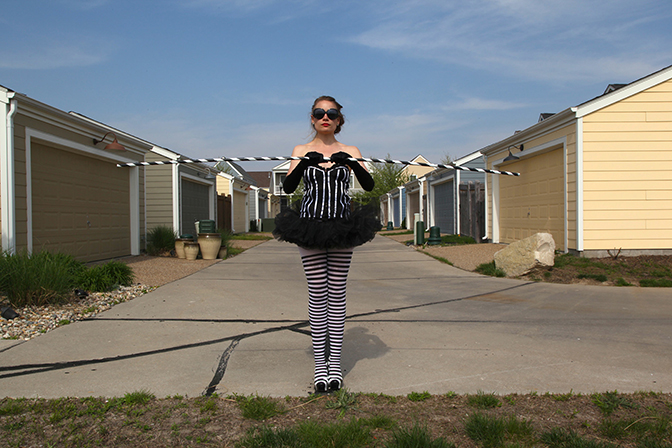
JaNae Contag, Edge Town – Town Edge, New Town in Saint Charles, MO, 2011
You grew up in Kansas City, studied Art, Political Science and Spanish at Trinity University in San Antonio, Texas, then received your MFA in Visual Arts from Washington University in St. Louis Missouri, and now have recently settled in Chicago. Can you expand upon this summary background? Perhaps, you can identify any early experience(s) that inform your current aesthetic examinations.
Growing up in the Kansas City area, I experienced two different environments. Up until I was in the fifth grade, my parents, younger brother and I lived on Missouri side of the city and then the summer before I started school we moved to the Kansas suburb of Overland Park. My parents were conscious of the economic and cultural differences I would encounter amongst my peers in this more affluent area, and I remember the discussion they had with me about how my classmates would have nicer things, bigger houses, and more clothes than I would. As we settled into the frame house my parents had built (based on one of five quasi-customizable floor plans in the subdivision), I became interested in the culture and aesthetics of suburban developments. I watched as my parents became upset when the new houses around us erected fences, one by one, blocking in our yard and making it impossible to find our neighborhood friends by cutting through a series of backyards.
My father is a landscape architect and my mother is an interior designer. I loved using my father’s Chartpak markers to draw elaborate renderings on large white roll paper of imaginary parks with benches, water slides, trees, and tennis courts using the language of aerial renderings. I notated each tree as a bubble with a dot inside to represent the trunk. That was so cool to me!
When I was fifteen, my parents and I decided that I would spend the summer with family friends in Cuenca, Ecuador. The experience of living in an urban environment combined with the immersion into new language altered my perspective of myself and my suburban home. When I returned home, everything felt entirely foreign. Materialistic things that used to matter felt significantly less important.
I desired more than ever to increase my knowledge of the world and live in more environments to approximate some understanding of culture and its physical landscapes. At Trinity University, I majored in three disciplines because I was eager to apply relationships between them, much in the spirit of a liberal arts education. My work in the art program centered on the concepts in urban studies and economic change I was reading about in my political science classes. My thesis in political science examined contemporary art theorist Michael Fried’s writings through the lens of several post-modern political philosophers. I had incredible professors that were encouraging of my decision to study abroad in Madrid, Spain to continue my studies of language, art, and politics.
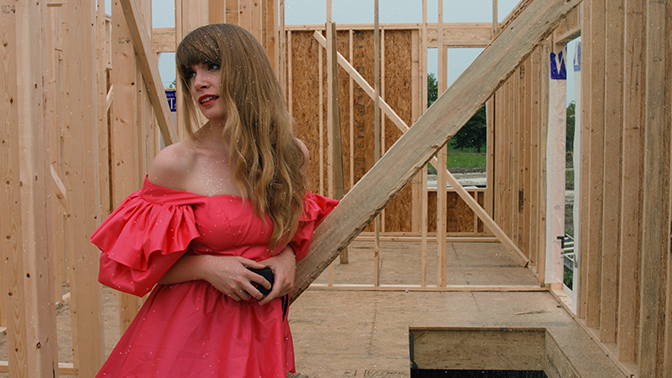
JaNae Contag, Symphony of Banality Music Video, New Town in Saint Charles, MO, 2015 (video still)
I spent the year after I graduated interning with the Visual Arts Center at The University of Texas at Austin. I was in close proximity to their thriving MFA program and became a keen observer of the politics of art programming, exhibition coordination, and innovative programming such as interactive sonic / visual events. These experiences were affirming for me.
During Washington University’s MFA program, I found that Saint Louis was a stimulating place for me to make work about the relationship between urban and suburban environments. The city is relatively small, and its surrounding municipalities fragment Saint Louis County into over ninety communities with their own politics, culture, and physical landscape. It felt very strange to observe and visually perform the ways in which this model (in its cultural/historical context) contributes to the othering of these places to each other. It also has a profound effect on urban and suburban economic decline. I found it everywhere.
My move to Chicago was due to many factors, including my new teaching position with The Illinois Institute of Art’s Photography and Digital Film & Video Production departments and starting an audio-visual production studio with a colleague.
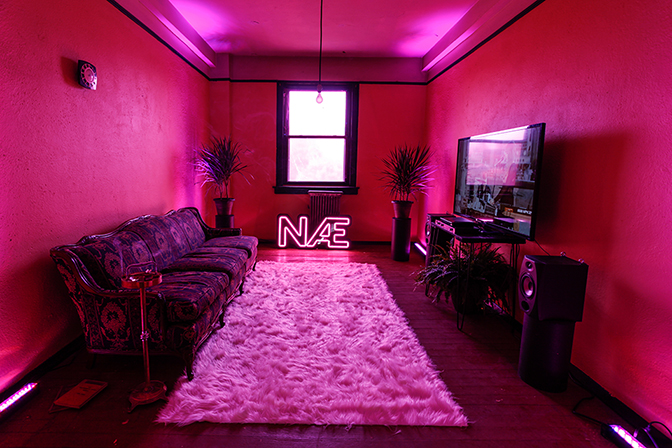
JaNae Contag, Implied Elegance Music Video Viewing Room, Pentimento Exhibition at Intersect Galley
in Saint Louis, MO, 2015 (video installation)
In your investigations, I notice there are recurring themes that look at the transformation (or decline?) of Midwest culture and environment. For instance, in Giving Up the Ghost, you pair blaring music with video footage taken at seemingly abandoned malls. What prompted this inquiry? And, what do you see this series stating about the subject or views on the noted?
I first learned of the mostly abandoned mall in the municipality of Crestwood in Saint Louis County and was determined to research why this happened, and devise a way to film inside the mall before it closed. The mall was an almost carbon copy (in age and design) to a mall I grew up visiting frequently in the suburbs of Minneapolis with my mom and grandma: Southdale Mall. Southdale was amongst Austrian architect Victor Gruen’s first American indoor mall projects in 1950’s suburbs, and I was interested in why so many malls that emulated his optimistic vision for utopian community had become mostly vacant.
The retail experience is a guilty pleasure of mine. I am a happily complicit shopper on occasion, and I enjoy observing the slick design tactics used in storefront windows, glitter-dunked mannequins, and candy-coated display lighting. Some combination of experiences going on yearly pilgrimages to The Mall of America with my mom and feeling dazzled by the outdoor Kansas City Plaza made me this way, I suspect.
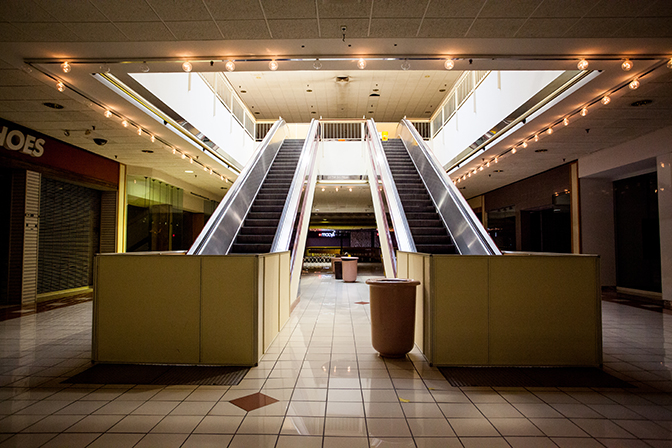
JaNae Contag, Giving Up the Ghost- Metcalf South Mall, Overland Park, KS, 2013 (video still)
I built a hidden dolly rig to film through Crestwood, as well as six regional malls in the Midwest through a grant from The Regional Arts Commission in Saint Louis. This became the project, Giving Up the Ghost. I also spent several afternoons collecting field recordings of the cavernous-sounding music in these malls. It is an uncanny experience to be inside. I found it striking how well-maintained and shiny the glass and floors were despite low foot-traffic. Label scars of businesses that have inhabited each retail bay and food court counter are visible. An altered sense of space, capacity, and function of retail design, stripped of the spectacle within the display window dominates these malls. It is like a state of rigor mortis. Everything down to the synthetic plants has been embalmed and prepared, is stiff and still, but nothing has been destroyed yet.
I think these mostly dead indoor malls can only signify so much on their own. The design and manifestation of retail in its places of commerce has to be changing, much like the trends in fashion it sells. To say that these malls signify a fault or deficiency in capitalism can be only applied when they are left as a reminder when they are closed, but not demolished. Usually, they are replaced (either on the same site or elsewhere) with mixed-use retail and residential development with signs and stores promoting the trending local fetishism that promises richness of life through farm fresh foods, walkability, and sustainable living. Same wolf, different costume. The façade of thriving capitalism has to exist fluidly.
It is bothersome to me when bloggers write about their nostalgia for “things of the past” because it is likely that they too contribute to the changing preferences of the retail experience. They may shop elsewhere or harbor beliefs that fuel the many racial and/or economic reasons a suburb’s demographics no longer support a regional indoor mall.
The reverent and accepting reaction, however, I find more appropriate. In two recent works, Retail Requiem and After the After Hours, I use humor in tandem with a visual memorialization of these malls. In Retail Requiem, I display two large TV screens in a black box viewing room with a neatly tiled black granite floor, like a memorial site, or mall floor. On one screen, the performer (me) plays solo flute requiems in front of several stage-like closed mall entrances, and on the other screen, the video documents the exteriors of each of these malls. In After The After Hours, the performer is dressed as a mannequin character from the copied title’s episode of The Twilight Zone and stands in a variety of constrained poses in the display windows of Evergreen Plaza Mall in Chicago. The accompaniment is a live piano recorded in a high-end thriving mall in an affluent municipality in Saint Louis.
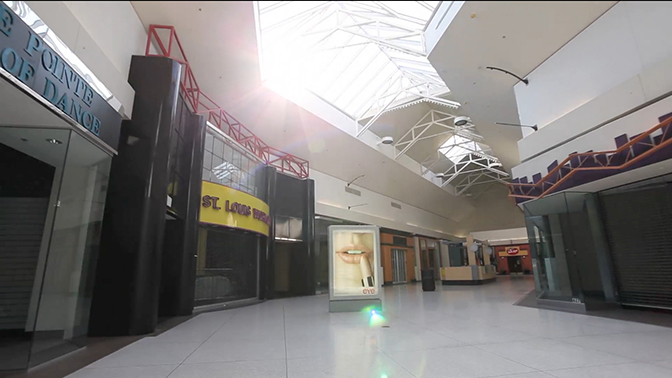
JaNae Contag, Giving Up the Ghost- Crestwood Mall, Crestwood, MO, 2012 (video still)
You released your debut EP Implied Elegance in 2015. In this work you are investigating a range of topics (nostalgia, a lover’s obsession, economic decay, etc.). Can you discuss this effort and identify how this intersects with your visual art practice?
The NÆ project has become my primary pursuit over the last year. It started as a way for me to distribute my critique of the built environment in a contemporary manifesto format through the vehicle of pop music. Now that the EP is available on iTunes and Spotify, it exists in a market outside of, but related to, the art market. I like this new context for my work. There are several music and lyric videos on YouTube as well. My intention is that this academically-driven pursuit is easily accessible and hopefully enjoyable to those that encounter it. I’m not sure that visual art does those two things often enough in the contemporary art world.
Each song is written to a particular architectural style, type of development, or its demise (“Memento Mori” is written to architectural ruins, for instance). The subject of each song becomes the object of affection for the vocal lyric, divulged passionately, fearfully, and at times insanely. For instance, in the synth-pop song, “Strip!” I use a Ke$ha-influenced spoken list of over fifty rhymed strip mall stores with a hook singing, “I can come and go and you don’t mind. I know you’ll be there for me every time.”
The concepts I address in this are the same as those that arise in my visual work, just formatted differently. I am constantly asking myself, how can I say this thing that is so easily packaged through jargon (“ruin porn” is a good example) in a way that elicits emotion from my listener? I want to dumb it down, but leave a great deal of ambiguity at the same time. This is something music does extremely well. It is ineffable. It is an emotion-birthing machine.
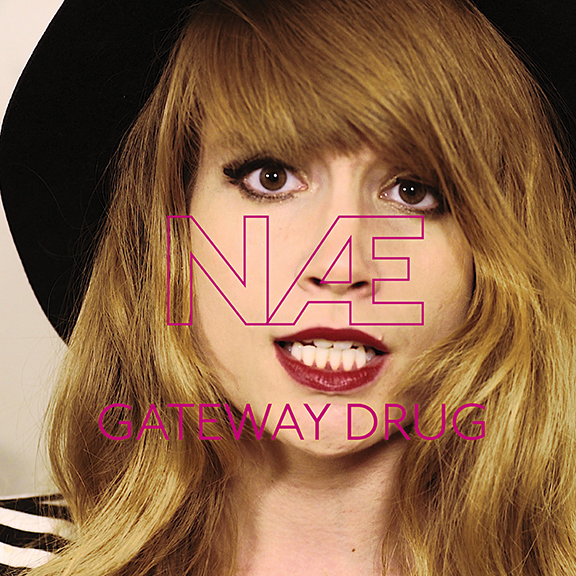
JaNae Contag, Gateway Drug Single, 2015
What do you value in your artistic practice?
First, curiosity. I want discover more about the places of intersection between landscape, language, and culture, and have found that the more places I experience, I realize the less I know about anything.
Second, collaboration. I love learning from, and making work with other artists and musicians. I am so grateful to Cathedral Studios in Saint Louis for collaborating in production and performance on the first NÆ EP. This project is not a solo endeavor. To me, maintaining community and collaboration is just as important, if not more important, as making art.
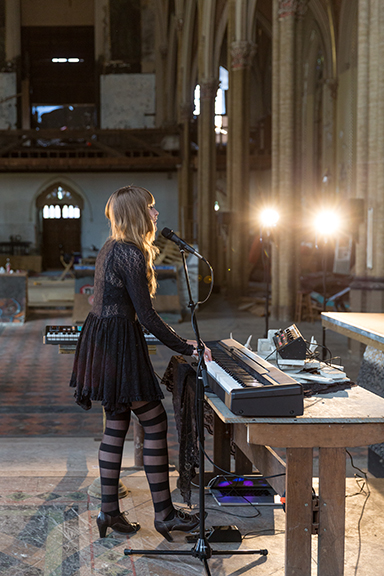
JaNae Contag, Documentation from Filming Memento Mori Music Video, St. Liborius Church in Saint Louis, MO, 2015
In addition to sonic and visual pursuits, you are also teaching. Can you share with us any specific items you regularly share with your students?
My students are often concerned with the question of “how does it look” over the aspect of “what does it mean.” To address this, I often assign projects that include a time-based element, or are completely untethered from obvious visual things. For example, I recently asked a class of photography majors to compose a 3-minute audio piece by combining field recordings in several locations with a stream-of-consciousness recording of themselves speaking. Their working framework became the intensity of auditory observation over their usual search for visual spectacle.
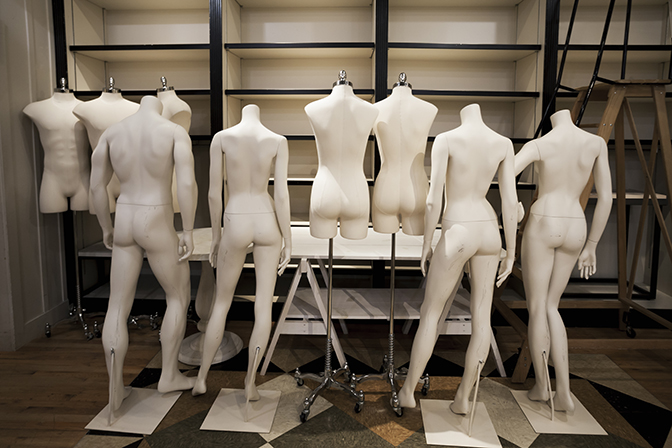
JaNae Contag, Lucky Brand Jeans, Frontenac Plaza Mall in Saint Louis, 2014
In addition to your inception in navigating the city’s art and music community, what other items are on the agenda for the remainder of 2016?
This year I am working on several projects including an LP for NÆ, a continuing photo series that combines retail catalogue pages with miscellaneous objects, and another photo series dealing with zoo imagery. I’ve been taking a lot of time lately driving around the city and its suburban rings, and feel ambitious about my personal goals in understanding the built environment here in Chicago.
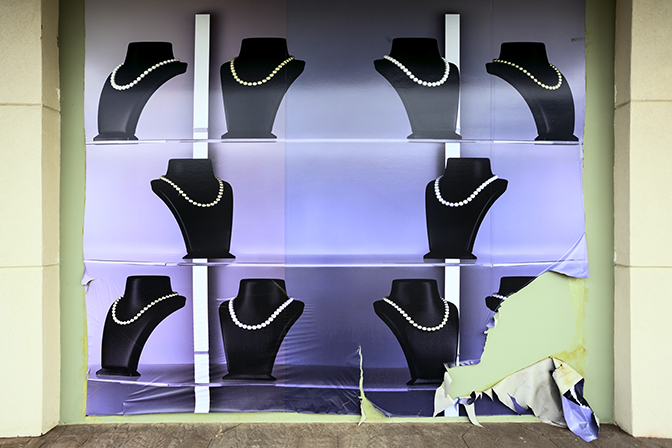
JaNae Contag, Corbin Park, Overland Park, KS, 2014
For additional information on the music and studio practice of JaNae Contag, please visit:
JaNae Contag – www.janaecontag.com
NÆ Music – www.naemusic.com
Concrete A/V Production – www.concreteav.com
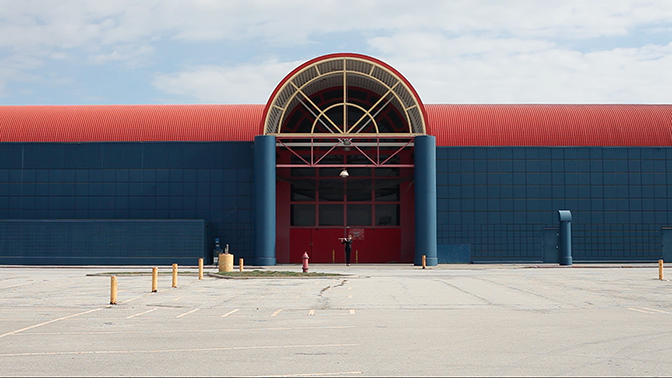
JaNae Contag, Retail Requiem, 2013 (video still)
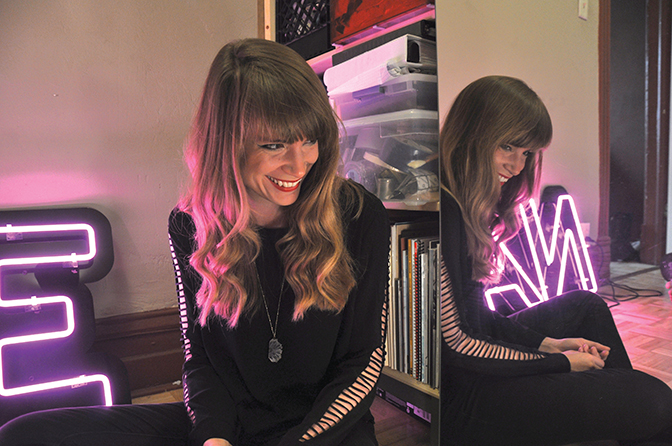
JaNae Contag, artist and musician, Chicago, IL, 2016
Artist interview and portrait by Chester Alamo-Costello


